Indian Jewellery as an Artistic and Cultural Symbol in India
Indian jewellery is not just an accessory; it is a profound reflection of art, culture, and heritage. Indian ornaments have been more than functional for centuries, representing identity, status, and spirituality. The history of Indian jewelry is a fascinating journey that reflects the rich past, rich traditions, pivotal role in rituals, weddings, festivals, symbolizing prosperity, protection, beauty and unparalleled craftsmanship of the country. From the sensuous designs of the past to the contemporary blend of styles, Indian jewellery has progressed steadily, blending tradition and innovation. This blog explores the artistic history of Indian jewellery, tracing its origins, cultural significance, and modern transformation.
The birth of Indian Jewellery – A glimpse into its rich history
Around 5000 years ago, India was the largest producer and exporter of beads. It was the first country to invent the diamond drill and later on the technique of mining the diamonds with the help of this drill was taught to the Roman people.
Indian jewellery signify richness, status, spirituality, and artistic excellence in Indian culture. The first forms of ornaments were discovered during the Indus Valley Civilization, dating back about 3000 BCE. They used gold, silver, and semi-precious stones in creating the first forms of jewelry. Indian jewellery has changed throughout different historical periods, giving it its unique styles, techniques, and cultural values.Let’s Dive into different periods of Indian Jewellery!
Jewelry in the Indus Valley Civilization (3000–1500 BCE)
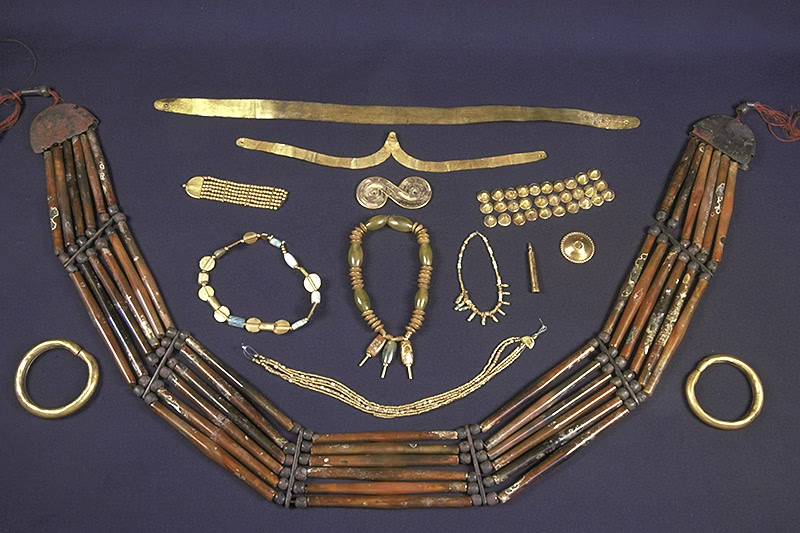
The outstanding Indus Valley Civilization, or the Harappan Civilization, is the earliest proof of jewelry-making techniques in India, and it testifies to a sophisticated and advanced knowledge of both metallurgy and exceptional craftsmanship. Large-scale excavations at major sites like Mohenjo-Daro and Harappa have yielded a treasure trove of interesting artifacts, some of which include but are not limited to:
Exquisitely crafted gold and silver bangles, along with stylishly designed necklaces and exquisite earrings.
Ornaments using very fine beading that exemplify materialities across colors such as carnelian, lapis lazuli, turquoise, and agate, points toward a flow of resources that is available to the craftspeople.
The advanced and complicated designs show an ability to create techniques like filigree and repoussage, and this represents their creativity and mastery in the field of craft.
Copper and bronze trinkets showcasing early innovations of metallurgical methodologies, which strongly contributed to a development in making jewelry.
In the pioneer age, jewelry was not an ornament at all. Men and women wore it for different forms. The pieces were played to perform different roles other than aesthetics. They represented social status, protected from evil spirits, and represented different religious beliefs that dominated the society at that time.
Vedic and Epic Period (1500 BCE–500 BCE): Jewelry as a Spiritual Symbol
Back in time, the people of Vedic period ushered India into a new dimension where pure and pious feelings were involved in expressing the art of jewelry. It was in this period that jewelry became much more than the mere decoration or social status. The Vedic period is marked by the concept of a ‘Navaratna’ which translates to ‘nine-valued jewels’. With the nine auspicious gemstones, each one is believed to carry a certain celestial force which brings good fortune.
What was common about the disadvantaged sections of the society over the ages and did not they wear the beautiful jewelry is that the most popular form of gold ornament has mostly been the ‘Navaratna’ jewelry known in the Vedic era? The ‘Navaratna’ jewelry set should only be worn by those who were worthy of wearing them.
On the other hand, the same ornaments reflect the body and not just the wealth at the time of wearing them. That is why the body ornaments also played symbolic roles as they were regarded as a means of expression. In the body ornaments, the nine-sacred “Navaratna” jewels were sought after by the wealthy and powerful who believed in the magical powers of these precious stones.
Mauryan and Gupta Empires (321 BCE–550 CE): The Rise of Temple Jewelry
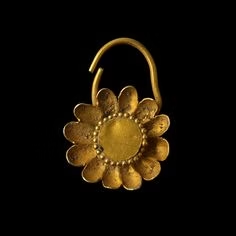
The Mauryan Empire that ruled India from 321 BCE to 185 BCE marked a significant period in the development of Indian jewelry. This era was characteristically marked by an amalgamation of both Buddhism and Jainism which resulted in a lot of influence on art and culture. Though Granting, this was a period of ultimate transformation and epitome of craftsmanship. It was during this period that Emperor Ashoka started to put forward a rather new approach in creating jewelry for the public, despite having been a ruler.
As a way of promoting his religious philosophy, Ashoka said that aesthetic values like simplicity and elegance needed to be achieved as well as the use of traditional designs and the advantage of mass production. Adornments with images of the lotus flower (a symbol of purity), or having engravings and carvings of religious verses enchantingly decorated the ornament pieces.
The Gupta Empire was another significant era in Indian history that produced a jewelry collection famous all over the world because of its sophistication and durability. Flowering of art, literature, and jewelry-making during the Gupta Empire demonstrates India’s Golden Age of Creativity and Aesthetics. The extensive view of creativity and the creation of beautiful and elaborate ornaments occur not only in the aesthetics of the ornaments alone but also in the mastery of the Indian jewellery art.
This era also demonstrated a cultural integration between India and cultures outside of the subcontinent, signifying the importance of trade relationships and their influence on cultural production. Thanks to the accumulation of wealth within the ruling class and the growing levels of material culture, plus the aspirations to collect “wealth” that was conspicuous and therefore contributed to its establishment as a societal norm.
- Temple Jewelry: Inspired by sculptures in Hindu temples, these ornaments were offered to deities and later worn by dancers and devotees.
- Kundan and Polki Work: Uncut diamonds and gemstones set in gold, a technique still popular today.
- Meenakari Enameling: A Persian influence that introduced colorful enamel designs to Indian ornaments.
Medieval India and Mughal Influence (1200–1800 CE)
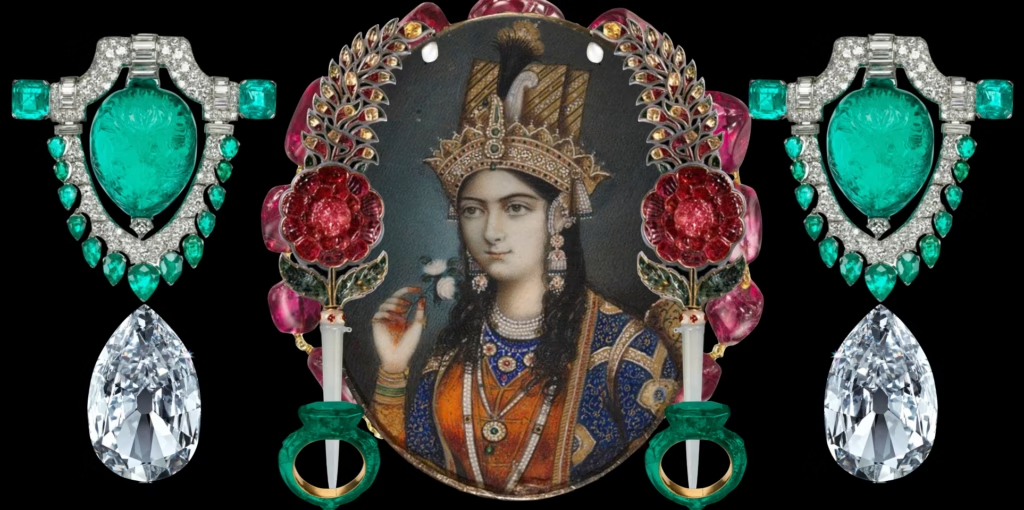
Multiple invaders, including the Delhi Sultanate and Mughal Empire, significantly contributed to the creation of a wide range of jewelry designs in India by integrating the Persian and Indian culture. The Mughals (1526–1857 CE), who had a deep appreciation for precious metals and exceptional attention to ornamentation and intricate filigree, contributed significantly to the development of jewelry by introducing several new techniques:
Jadau Jewelry: A new way of producing jewelry by the setting of raw diamonds and gemstones with a fine mixture of gold and natural polish.
Meenakari Work: Transparent enamel painting that is executed on the surfaces sheathed with gold, which happens to produce colorful and bright jewelry.
Emerald and Pearl Jewelry: Mughals preferred to wear both emerald and pearl earrings and even better if it was embedded with rubies and engraved with verses from the Quran.
The Rajput rulers of Rajasthan also from their own different jewelry styles, for example, polki diamonds, kundan decoration, and heavy gold jewelry marked with religious symbols.
Colonial Impact and the Renaissance of Indian Jewellery Post-Independence (1800–Present)
Following the occupation by the British during the colonial period (1858–1947), there was a dramatic transformation in the design and structure of jewelry made in various parts of India. However, while the traditional craftsmanship which has been in existence for centuries continued and thrived over the years, the incorporation of modern techniques took place in Indian Jewellery design leading to beautiful and amazing creations. These were being tailored to suit the needs of the Indian royalty at that time, they took over quite a large part of the Indian Jewellery market, and this was all done at a time when parts of the population had been deprived during the colonial period.
After India’s independence in 1947, there was a renewed effort to treasure and inculcate the old-time handcrafted jewelry skills with a view to preserving part of the age-old Indian culture and heritage. Some of the artistic and captivating techniques that have been preserved through this period include: the filigree jewelry of Orissa, Hyderabad’s enameled Bidri work and Jagged Jeweler Works of Bangalore, and jadau-kundan jewelry was one of the most drawn-out and gifted jaw-dropping arts of Jaipur.
Bollywood played a crucial role in popularizing Indian Jewellery, influencing bridal trends and bringing Indian ornaments into the global spotlight.
Modern Trends in Indian Jewellery
Indian jewellery today has undergone a dramatic shift and adopted an interesting fusion that brings together traditional and modern fashion to reflect the ever-changing global tastes and preferences of consumers. Some of the most influential key modern trends that have been observed in this vibrant industry are:
Minimalist jewelry: Lightweight chains, sleek bangles, delicate rings are becoming popular among youngsters.
Fusion jewelry: Mixing Indian craftsmanship and Western aesthetics that can be witnessed in diamond-encrusted temple jewelry and Indo-Western statement pieces.
Sustainable Ethical Jewelry: Eco-friendly and ethically sourced gemstones and metals are being preferred by conscious consumers.
Tech-Driven Customization: 3D printing combined with AI-guided design tools has made jewelry making a custom and intricate art form.
Regional Jewelry Styles of India
Jewelry is a synthesis of the amazing diversity of regions and religions. In almost every corner of Northern India, one finds the heavy polki and Kundan work with Mughal influences on designs. Another category of jewelry that finds great acceptance includes temple jewelry which draws its inspiration from the deities.
While South India brings forth a plethora of temple jewelry, it is also known for its gold filigree and Kasumala, a coin necklace.
The filigree work can be found in Odisha as Jun Biri jewelry and the jewelry from Assam has become infamous.
Rajasthan has represented exquisite Meenakari jewelry in Western India while Maharashtra is known for its Nath jewelry(nose ring).
Tribal jewelry offers simple silver ornaments or beading or ones made out of shells and bone, which reflect the simplicity and ingenuity of tribal communities.
Evolution of Jewelry Styles Across Eras
There has been a huge transformation of Indian Jewellery over the centuries.
Teaching Jewelry: The piece that came alive through spirituality was a simple, beaded and metal design.
Medieval India: Jewelled objects of art were created with the patronage of royalty, so too elaborate craftsmanship with gemstones.
Colonial Period: Indo-European designs obtained through the fusion of European influences with the traditional designs.
Post-Independence: A resurgence of native art forms began with the inception of handmade jewelry.
Trendy and Modern: It’s mixing minimalistic pieces and statement jewelry for the modern fashionista.
Bridal and Festive Jewelry Through the Ages
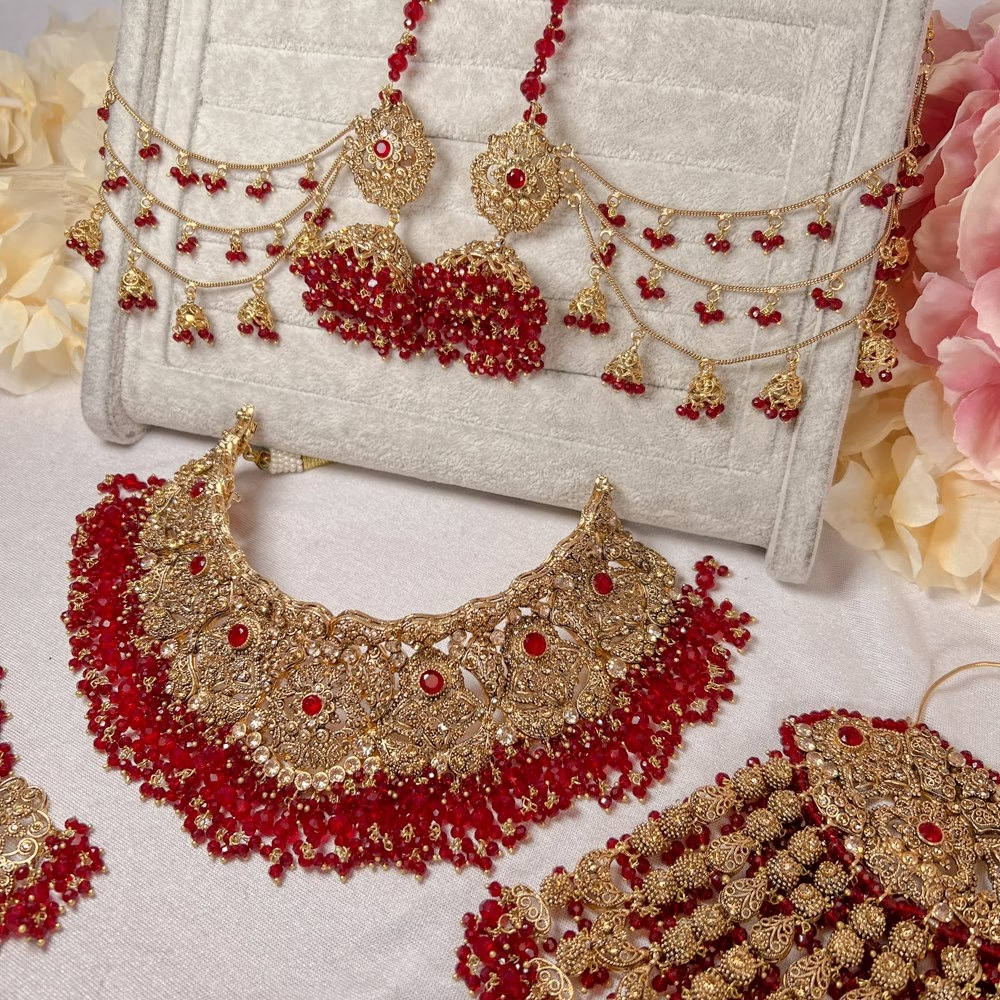
Jewelry worn by brides and traditional Indian Jewellery has cultural and historical importance, and very often pieces like Kundan, Polki, temple jewelry represent prosperity, heritage, and married bliss. The luxury of design and decades of history contribute to this very ornamental factor. Carefully maintained and handcrafted over the generations, the sparkle of these pieces is unbroken in Uttar Pradesh, a true reflection of joy and celebrations poking through the innate traditions of the Indian craftsmanship.
Since Bollywood actresses are showing off their procession of splendid jewelry on the screen or during other high-profile events, though couched in a seemingly never-ending race of catwalk-by-celebrities, one can never forget old-world charm. This comparison between tradition and glamour will continue to fuel dreams in brides as well as jewelry devotee, breathing life into India’s inevitable jewelry legacy.
Famous Jewelry Brands in India
There are many renowned Indian Jewellery brands and they are advanced in heavy traditional designs. They include:
National Brands: Tanishq, PC Jeweller, Malabar Gold & Diamonds, and Kalyan Jewellers are all known for their exquisite designs and craftsmanship.
State-Specific Brands: Amrapali (Rajasthan), GRT Jewellers (Tamil Nadu), and Senco Gold & Diamonds (West Bengal) are known for their regional specialties.
Contemporary Trends: Jewelry as Wearable Art
Contemporary Indian jewellery has attained a new height-a vibrant blend of its traditional roots and modern-day style, minimalism, Indo-Western touch, and sustainability. The sector is being revolutionized by cutting-edge technologies like 3D printing and AI-assisted designs, encouraging innovation and options for creativity, personalization, and accessibility. These trends illustrate the continuing process of change whereby jewelry becomes wearable art. Jewelry thus elegantly authors traditional craftsmanship and incorporates modern aesthetics, responding to global tastes and remaining rooted in India’s diverse cultural heritage.
Indian Jewelry on the Global Stage
Indian jewellery has enchanted, with elaborate craftsmanship and evocative designs, global fashion and luxury brands. Celebrities, while all over the world, wear Indian pieces, significantly showcasing their elegance at red-carpet and peer occasions. There is a growing trend in which famous designers cite India’s designs, gemstones, and techniques in their collections, combining artisanal work with modern aesthetics. Such global admiration has propelled Indian jewellery into the spotlight and made the creative and artisanal excellence of Indian artisans recognized at a global level within the world’s jewelry business.
The Timeless Appeal of Indian Jewellery
Indian jewellery is a vibrant ode to heritage and craftsmanship, developed over centuries and still maintaining traditional aspects. From ancient to contemporary, it holds the fragrant mix of skill and modernity. With the growing international appeal, Indian jewellery is a perfect expression of identity, grace, and ageless beauty. Coupled with this, the industry revered in the future would adopt sustainable measures and technologies that would add wings to this cherished art form, thereby being a subject of inspiration to posterity based on its inheritance and existence.
For further reading on Indian Jewellery, you can visit these useful resources:
Check out our Blog Page on Traditional Indian art.

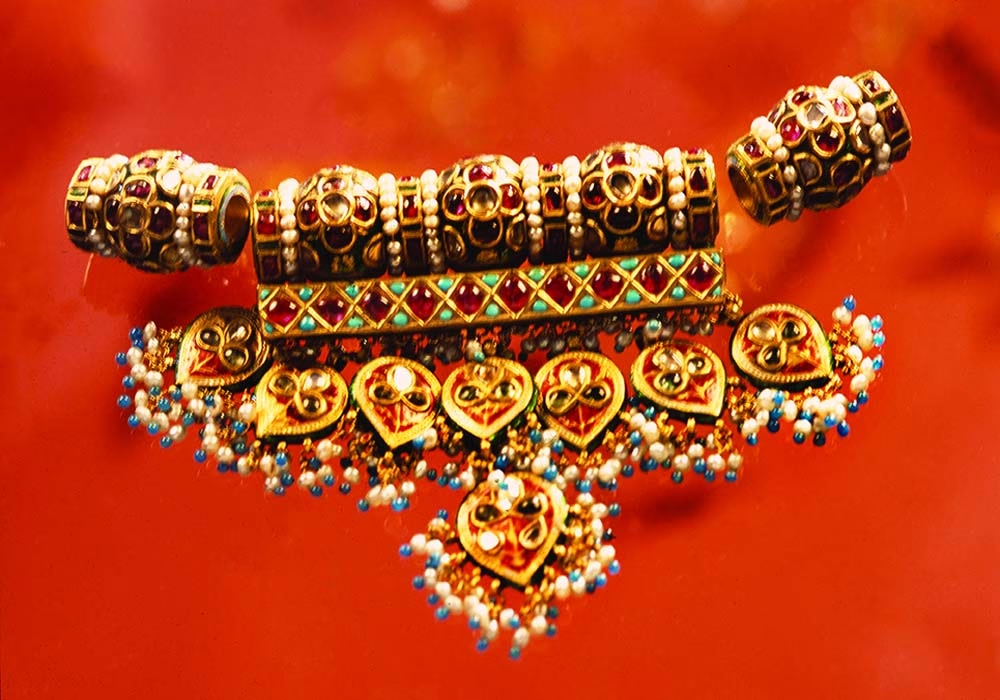

Leave a Reply